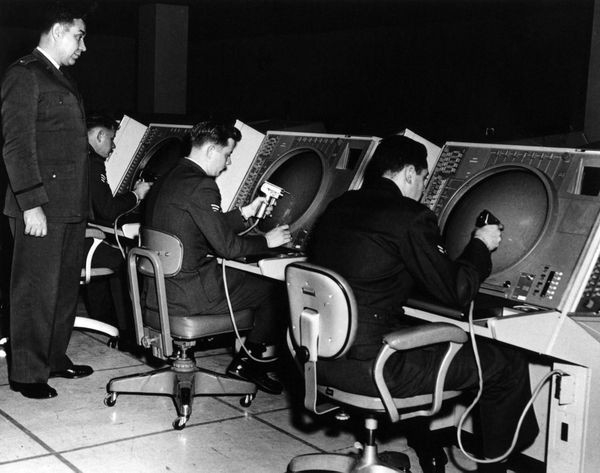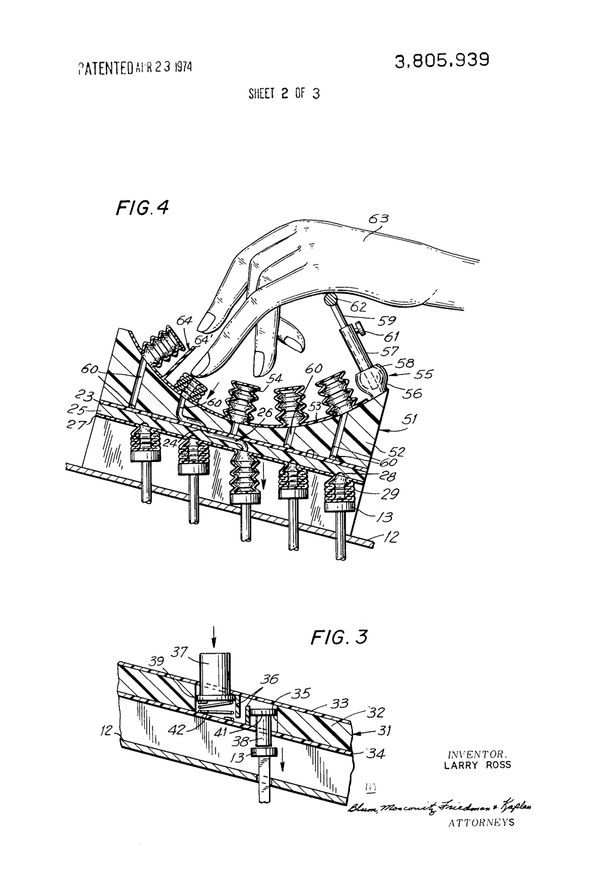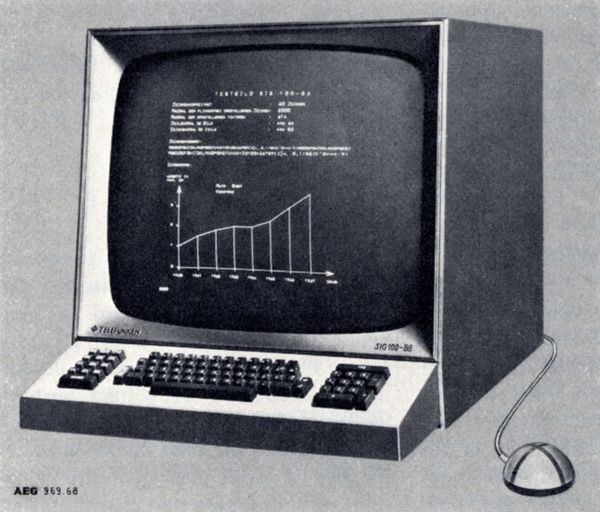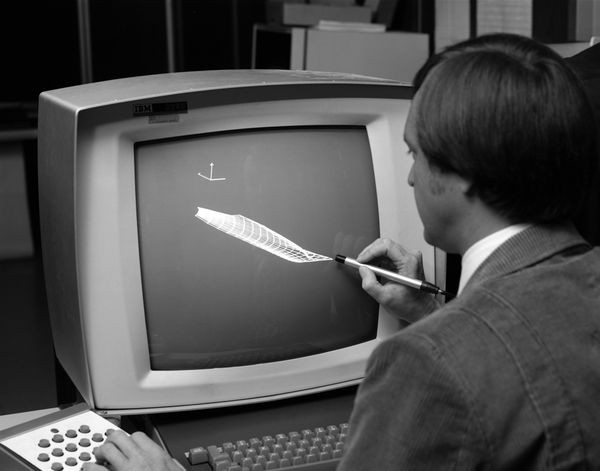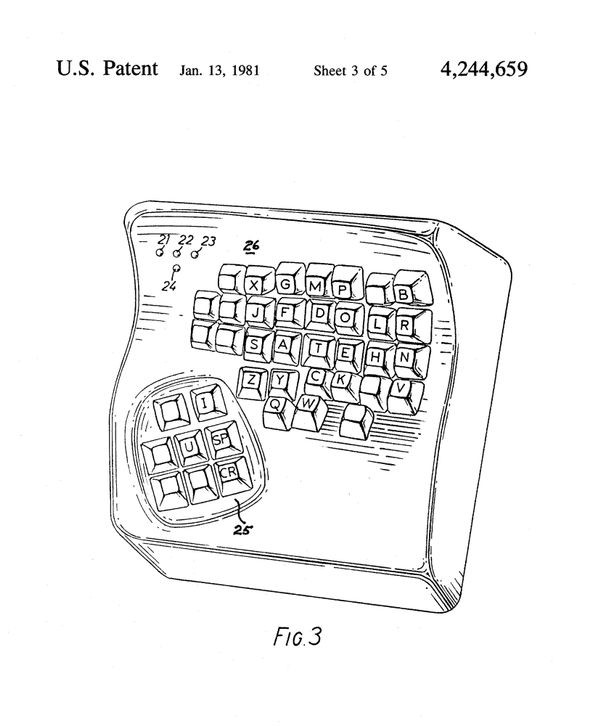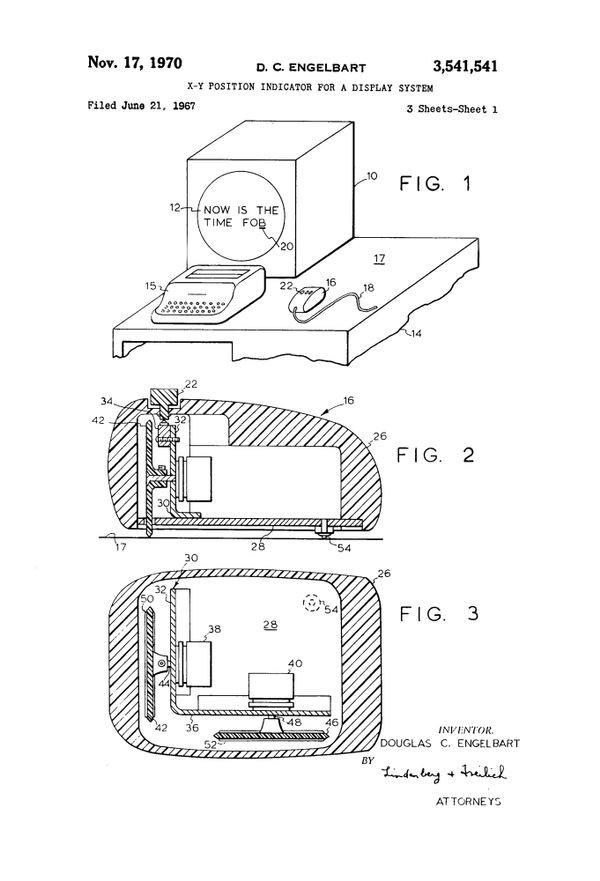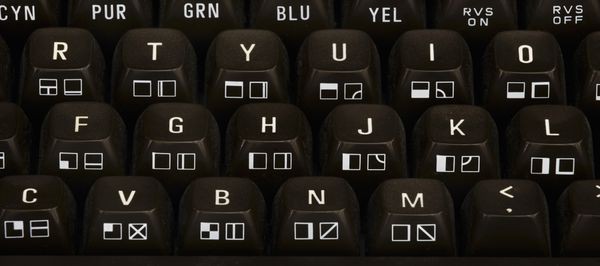People & Machines Communicating: Input and Output
SAGE radar monitors
This U.S. air-defense system used “light guns” to identify the location of data points displayed on radar-like computer monitors.
People & Machines Communicating: Input and Output
“Human-Computer Interaction” is a two-way street: people talk to computers, and they talk to us. We have been endlessly creative in doing both.
Part of the story is about hardware. But much is about software. Applications and drivers tell devices how to communicate, how to perform the tasks we want. The equation remains, as always: hardware + software = useful tool.
Keyboard “glove”
IBM’s Robert Seibel and Nathaniel Rochester conceived this Cold War device for computer operators flying in “high-acceleration aircraft and missiles,” among other places. They anticipated “wearable computers” by decades.
View Artifact DetailRoss keyboard actuator
Ross hoped to promote faster and more ergonomic operation of conventional keyboards through links to variable-shape keyboards.
View Artifact DetailDoug Engelbart’s mouse prototype
The prototype mouse invented at Stanford Research Institute rolled on two sharp wheels facing 90 degrees from each other.
View Artifact DetailSIG-100 video terminal and mouse
This October 1968 photograph appeared several weeks before Doug Engelbart’s first public demonstration of the SRI mouse. It is unclear whether this “Rollkugel” predates Engelbart’s invention, but it does appear to be the first rolling-ball mouse.
View Artifact DetailIBM 2250 graphics station
Part of the System/360 mainframe computer family, this $80,000 graphic terminal displayed vectors starting and ending on points in a 1024-by-1024 grid. If many vectors were displayed, the screen would flicker.
View Artifact DetailMaltron keyboard arrangement
Lillian Malt’s keyboards accounted for hand anatomy, as well as the frequency of both individual letter occurrence and successive keystrokes.
View Artifact DetailEngelbart mouse patent drawings
The word “mouse” does not appear in Engelbart’s patent for the computer pointing device that became ubiquitous within 20 years. The knife-edged wheels each rolled in just one direction, transmitting movement information for that direction. Each slid without turning when the mouse was moved in the other direction.
View Artifact DetailCommodore 64 home computer keyboard
The keytops show graphical elements that could be entered directly from the keyboard.
View Artifact Detail